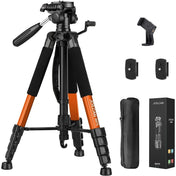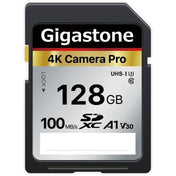Overview
Digital backups are essential for photographers to protect their images from risks like physical damage, device failures, accidental deletion, and theft. A solid backup strategy should include using multiple storage media, developing a routine, maintaining multiple copies, and regularly testing backups. Staying organized, utilizing software solutions, and networking with other photographers can further enhance your backup practices. Safeguarding your photography ensures your artistic journey remains uninterrupted and your memories are preserved for the future.
In the digital age, the memories we capture through photography represent not just images but stories, moments, and experiences worth preserving. However, the risk of losing those precious images can be a daunting prospect for any photographer, whether amateur or professional. This is where the importance of digital backups comes into play. In this article, we will explore the significance of safeguarding your photography work and how effective strategies can be implemented to ensure that your images remain safe and accessible.
Understanding the Risks
Before we dive into the solutions, it is crucial to recognize the potential risks that can jeopardize your precious photos. Here are some common threats:
- Physical Damage: Whether it's a drop, spill, or fire, physical damage to your camera or storage devices can lead to irreversible loss.
- Device Failures: Hard drives can crash, memory cards can corrupt, and technology is not infallible.
- Accidental Deletion: Human error is commonplace; it’s all too easy to accidentally delete your treasured images.
- Theft: Sadly, cameras and electronic devices are often targets for theft, risking the loss of not only equipment but also the photos stored within.
Understanding these risks is the first step in creating a solid backup plan to protect your photography portfolio.
The Concept of Digital Backups
Digital backups involve making copies of your files and storing them in multiple locations to access them should something go wrong. This process is essential for photographers who wish to maintain their work securely without the fear of losing it all. Let's delve into why this practice is so crucial:
Preservation of Artistry
Your photography is an extension of your artistic vision. Losing your work can be devastating and can hinder your ability to share your creativity with the world. Digital backups allow you to preserve your artistry over time, ensuring that your images can be viewed by future generations.
Peace of Mind
Knowing that you have a reliable backup can relieve much of the stress that comes with photography, especially during crucial moments like weddings, events, or client shoots. With the right plan in place, you can focus on capturing the perfect shot rather than worrying about what might happen if something goes amiss.
Professional Reputation
For professional photographers, delivering high-quality work is paramount. Clients rely on you to provide results, and losing that work can affect your reputation. Regular backups serve as a fail-safe that reassures clients that you're a reliable choice for their photography needs.
Creating a Backup Strategy
Now that you understand the significance of backups, it’s time to formulate a robust strategy tailored to your needs as a photographer. Consider the following steps:
1. Choose the Right Storage Media
While high-speed SD cards are essential for capturing high-quality images, they should not be the sole storage solution. Utilize multiple types of storage media:
- External Hard Drives: Great for large volumes of data and often more cost-effective as storage needs grow.
- Cloud Storage: Offers added security and access flexibility. It allows you to access your work from anywhere with an internet connection and provides a secure off-site backup.
- Network Attached Storage (NAS): Perfect for photographers with a significant amount of work who need shared access among devices in a home or studio.
2. Develop a Routine
Consistency is key when it comes to backups. Develop a regular schedule to back up your images after each shoot. A good rule of thumb is to back up files at the end of every workday, ensuring nothing gets lost in the hustle and bustle of daily photography tasks.
3. Create Multiple Copies
For enhanced safety, always have multiple copies of your photos stored in different locations. A general best practice is the 3-2-1 rule: keep three copies of your data, two on different physical devices, and one copy off-site. This means if one medium fails, your work remains intact elsewhere.
4. Test Your Backups
It’s not enough just to create backups; you need to ensure they work. Regularly test your backed-up files to confirm that everything is intact and accessible. This practice will reveal any potential issues before they can cause significant problems.
Best Practices for Backup Management
Backup management can sometimes feel overwhelming, but following these best practices can streamline the process:
Organize Your Files
Establish an organized file structure that makes it easy to locate your photos. Consider labeling folders by date, event, or project. An organized digital portfolio helps tremendously during backing up files and retrieving them in the future.
Utilize Software Solutions
Many software applications can assist in automating the backup process. Consider using photo management software that can automatically back up your images, reducing the risk of forgetting to do it manually.
Stay Informed on Technology
As technology evolves, stay up to date with the latest developments in storage options and strategies. New technologies often provide enhancements that can improve the efficiency and reliability of your backup methods.
Expanding Your Digital Backup Knowledge
Investing time into understanding digital backups can profoundly impact your photography journey. Engaging in relevant courses, reading about industry best practices, and networking with fellow photographers can provide valuable insights into how best to protect your work.
Networking and Support Groups
Joining photography groups, both online and offline, can open avenues for shared knowledge. Engaging with fellow photographers can help you learn effective backup strategies, meet people who have faced similar challenges, and gather insights on technology that works for them.
Attend Workshops or Webinars
Many organizations provide workshops focusing on digital preservation and backup techniques. Consider attending these to gather firsthand knowledge from experts who specialize in the field. This investment will pay off in ensuring your work is safe and secure.
Empowering Your Photography Journey
In wrapping up, the importance of digital backups for your photography cannot be overstated. They serve as an essential safety net that protects your creative endeavors while providing peace of mind. By implementing a structured backup strategy that incorporates various media, developing consistent habits, and staying informed about the latest practices, you can safeguard your photography skills while ensuring your artistic journey is not hindered by the loss of precious memories.
Your photos tell stories—make sure they are stories you can keep for a lifetime.
Linked Product

Kodak SDXC Card 256GB UHS-I U3 V30 Ultra
The Kodak SDXC Card 256GB UHS-I U3 V30 Ultra provides ample storage for photographers, accommodating high-resolution images and 4K/8K videos. With impressive write speeds of up to 85MB/s, it supports continuous shooting and quick file transfers to compatible devices. This card is particularly beneficial for professional DSLR users seeking reliable performance during demanding photo sessions.
View Product










